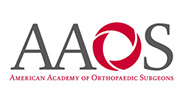What is Distal Femoral Osteotomy?
An osteotomy is a surgical procedure that involves cutting of bone. The distal femur is part of the femur (thighbone) just above the knee joint. Distal femoral osteotomy is performed to correct knee alignment which can lead to excessive loading and degeneration of one side of the knee joint. The procedure involves cutting of the distal femur, repositioning the bones and securing them in the proper alignment.
Indications for Distal Femur Osteotomy
Malalignment of the bones at the knee joint may be present at birth or may occur due to trauma or arthritis. Two types of deformity usually occur:
- Genu varum: The tibia (shinbone) turns inwards in relation to the femur causing a bow-legged deformity.
- Genu valgus: The tibia turns outwards in relation to the femur causing a knock-knee deformity
A distal femoral osteotomy is recommended if you have a genu valgus deformity causing degeneration in the outer (lateral) part of the knee.
During a distal femoral osteotomy, the femur is lined up surgically so that the femoral axis passes through the center of the knee and pressure on the damaged side of the knee joint is relieved.
Who is Eligible for Distal Femoral Osteotomy?
You may be a candidate for distal femoral osteotomy if you are:
- Less than 60 to 65 years old
- Physically active and healthy
- Affected by lateral arthritis only
Techniques of Distal Femoral Osteotomy
There are two main techniques to perform a distal femoral osteotomy:
- Lateral opening wedge osteotomy
- Medial closing wedge osteotomy
Lateral opening wedge osteotomy is considered easier and more accurate.
Procedure for Distal Femoral Osteotomy
Distal femoral osteotomy is usually performed under general anesthesia. The following technique is used:
- An incision is made over the distal femur where the osteotomy is to be performed. A medial closing wedge osteotomy is performed on the inside of the femur while a lateral opening wedge osteotomy is performed on the outside.
- The cut in the distal femur is made using an oscillating saw and a predetermined section of bone is removed.
- For a medial closing wedge osteotomy, a wedge-shaped section of bone is removed and the opening is closed by bringing the cut ends of the bones together, thus changing the alignment of the bones.
- For a lateral opening wedge osteotomy, a wedge-shaped section of bone is removed and the gap is opened further to change the alignment of the bones. A bone graft is inserted into the gap so that the bones fuse in the new alignment.
- The bones are secured in position with the help of metal plates and screws.
- The incision is closed and healing occurs the same way a fracture heals.
Recovery from Osteotomy Surgery
After the operation, healing may take between 2 to 6 months before you can resume normal activities.
Benefits of Distal Femoral Osteotomy
Distal femoral osteotomy can:
- Reduce knee pain significantly
- Improve knee function
- Delay the need for knee replacement




